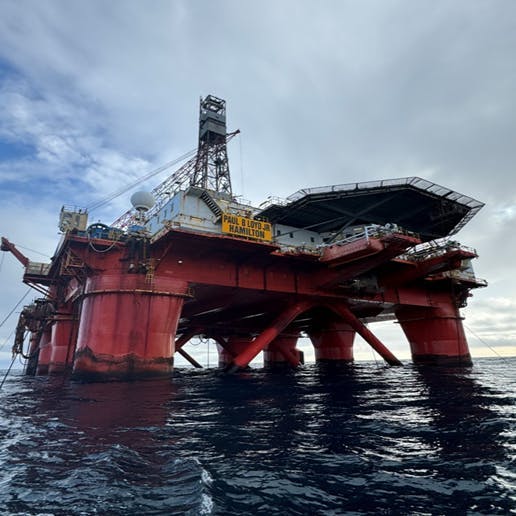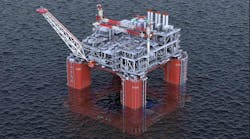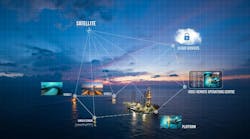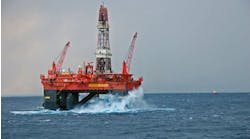Full wireless coverage enables offshore digital transformation
By Øyvind Skjervik, Tampnet
With the growing adoption of sensors and Internet of Things devices on platforms, oil and gas companies can monitor and manage operations remotely, which reduces costs and enhances safety.
Digital tools allow the base crew to call on experts from onshore or gain better situational awareness when unexpected events occur. In addition, having fewer people offshore leads to increased safety and reduced risk of injury.
Realizing these benefits requires real-time processing and transfer of large data volumes with minimal latency and uncompromised quality.
Fiber cables provide the foundation for high-speed and large bandwidth for most offshore fields, which combined with private 4G/5G networks and satellites opens up new possibilities for connecting rigs, FPSOs and offshore vessels.
Case study
Tampnet was contacted by Dolphin Drilling in 2023 because it faced significant connectivity challenges in its offshore operations. Traditional VSAT-based communication systems, which relied on satellites with high latency, created delays that hindered the adoption of digitalization and automation technologies.
The Paul B. Loyd Jr. semisubmersible drilling rig was the first floating rig in the North Sea to implement the Connected Rig solution with a mix of advanced technologies, including a high-capacity, low-latency offshore 4G/LTE network connected to nearby installations with fiber-backhaul and LEO satellite services via Starlink and OneWeb for global coverage.
This fully managed hybrid private network, equipped with edge computer capabilities, integrates into existing distributed antenna systems to achieve complete coverage. The network architecture supports hybrid private/public traffic segregation, enabling the private network to operate autonomously, independent of shore-based systems.
Coverage throughout the rig
Traffic orchestration was managed through Versa SD-WAN technology, ensuring critical operational data was prioritized and other traffic needs balanced. This technology provided high-bandwidth connectivity, network redundancy and onboard services like Wi-Fi and VOIP (voice over internet protocol), enabling efficient communication between offshore crews and onshore teams.
In addition to deploying Tampnet’s technology across its fleet, Dolphin Drilling is exploring the option to implement next-generation mobile technology with just two antennas, which will provide comprehensive coverage throughout the rig. This will improve access for crew members as well as unlock capabilities such as providing access to systems and data anywhere and at all times and tracking personnel movement in real time to respond quickly to safety incidents.
Mission critical solutions
In addition, Tampnet’s new MCX (Mission Critical C) technology provides next-generation functionality within group communication. MCX uses the private mobile network as a bearer and runs on the smartphone allowing services to be consolidated into one device and one network topology. Features like push to talk, push to video, multimedia messaging, presence and location-based services take the situational awareness to the next level and increase operational efficiency and safety. It also offers a walkie-talkie-like feature for instant group communication, replacing traditional radios with more versatile solutions.
By having a proactive approach to enhancing connectivity and operational efficiency, Dolphin Drilling ensures that its rigs will continue to meet and exceed the evolving demands of the offshore sector, supporting both its clients' ambitions and its commitment to crew welfare and safety.











